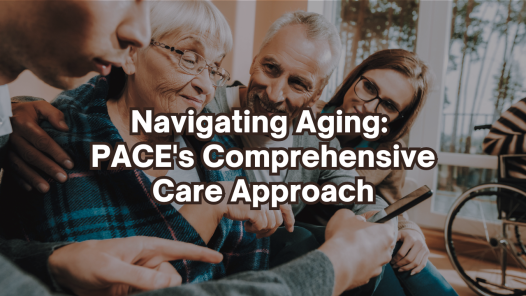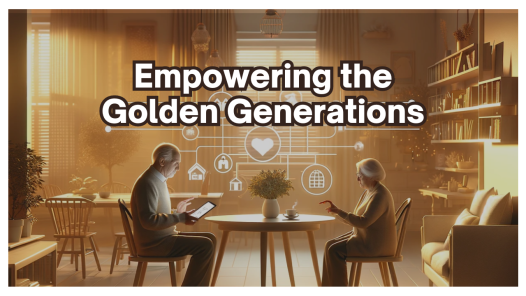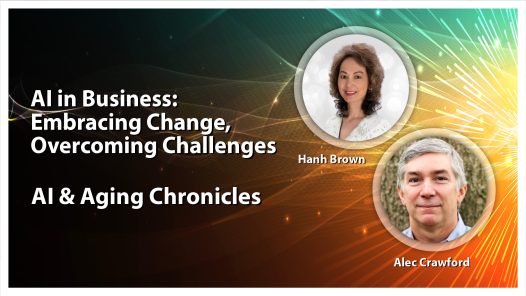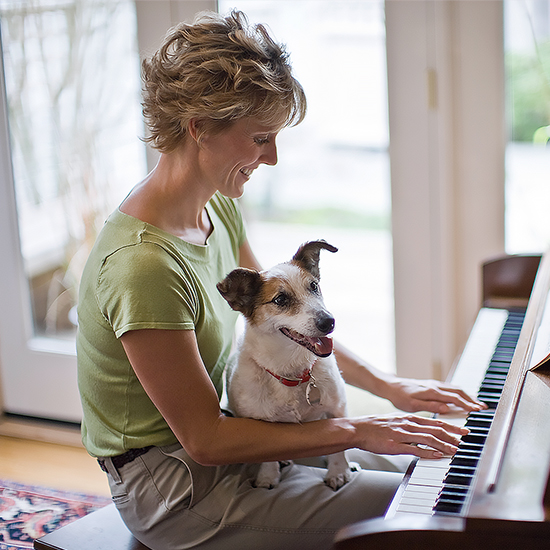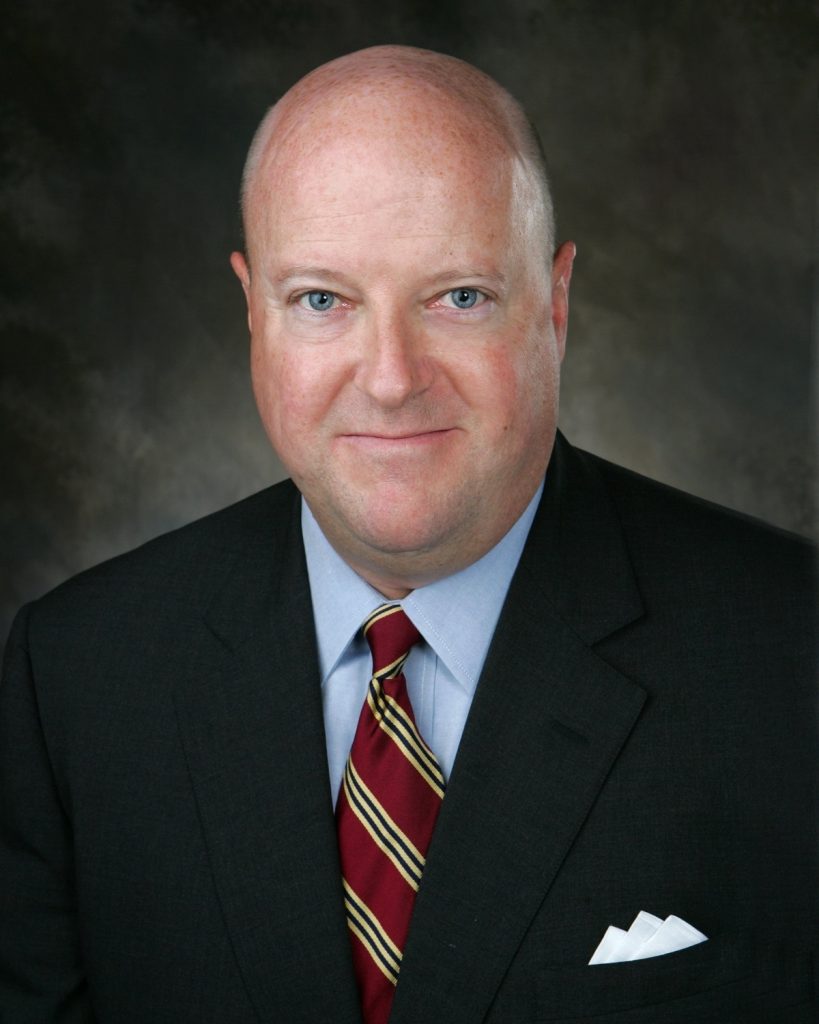
Timothy J. Reidy’s career of 40 years includes successfully completing projects for local, national and international builders and developers, including mid & high-rise multifamily senior living, condominium and apartment projects. With over 14 years of experience working for national senior living owners and operators, including Classic Residence by Hyatt (now Vi Living), Devonshire, Paradise Retirement and HRA.
Mr. Reidy has directed the design and construction completion of projects across the United States (CA, NY, IL, FL, CO, TX, NJ & HI). He is a graduate of Arizona State University and enjoys golfing and occasionally finding his ball in the fairway.
He lives in Jacksonville, FL and is married to Lauren, his wife of 25 years. They are extremely proud of their two remarkable and talented children Eleanor (24) and Mitchell (22).
Topics:
- Market considerations for new Senior Living – Where to Build?
- Design for Multiple Care Levels (IL, AL, MC, SNF)
- Covid Design considerations for Future Communities
- Interior Design and Fabric Choices
- Sales: Getting Residents comfortable with the Move.
Hanh Brown: [00:00:00] Thank you so much for being here, Tim.
Timothy J. Reidy: [00:01:23] Nice to be with you.
Hanh Brown: [00:01:24] Tim. Could you start by telling our audience where you’re from and where you are now from a career standpoint and how you get there?
Timothy J. Reidy: [00:01:32] My career spans about 40 years. The first 15 years were with local national and international construction companies back in about 1996 sites switched over to real estate development and have been 25 years in real estate development for developers of condos, apartments, and senior living.
[00:01:55] 14 of the last 25 years have been in senior living with class crows students by Hyatt Devin, shyer, paradise retirement, as well as HRA senior living. And I’m currently president of grant park associates, which provides real estate development services.Hanh Brown: [00:02:12] Great. So let me ask you a couple of questions in the rum of senior living housing development.
[00:02:18] So when you’re looking to bill a new senior living. What are some of the factors that you take into account? How do you determine where to build?Timothy J. Reidy: [00:02:25] Obviously it depends on what the company is involved in, whether they’re in law, involved in multiple levels of senior living, independent living, assisted living, memory care, skilled nursing.
[00:02:39] And what we usually do is we identify an area that we want to go into. And the first thing we do is we pull up the market data. On that area. I usually use a group called CoStar. Or there’s other groups out there that do a very good job of providing market data for agent income, qualified personnel. And you usually set the level of agent income, quality of qualified people that you want. [00:03:07] Maybe you want $50,000 a year of income. Maybe you want to people that are 75 years old or, and what you’ll do is the, the market information will come in and say, there’s maybe 50,000 people in that area or 20,000 people in that area that are ancient income qualified. You usually have a penetration rate or something that says, you know, not everyone is going to want to move into a senior living. [00:03:34] Property. So you have a certain percentage, usually between two and 4% would be interested in that type of product. They have the need for it, or want to do it, or you come up with a number, maybe it’s 400 of those 20,000 people who would want to move into that type of property. And then you take a look at your competition and you’d see how many units they have built in that area. [00:04:00] What are the. Quality of those units. Are they old? Are they new? And you can make a determination if that’s a good market.Hanh Brown: [00:04:09] So the market feasibility, is it typically done by a third party or is that under your scope as well?
Timothy J. Reidy: [00:04:17] No, it’s usually done under a third party, usually updating all of that information on a real-time basis.
[00:04:24] Uh, so that there’s a lot of people moving in, moving out. So it’s not something that any one company could do in house very well. So there are a lot of good companies that are on the ground doing that type of work on a real time in the past.Hanh Brown: [00:04:38] What type of design are you mostly involved with? Where they assisted living with a memory care or a continuum of care?
Timothy J. Reidy: [00:04:49] Obviously, independent living are people who don’t need any level of the activity of daily living care. Usually those units are coming with a lot of amenities. Our larger units, it could be two or even three bedroom units. When I was with classic residence by Hyatt, which is now me living. We built a number of luxury properties and the independent living really was almost like condominium living.
[00:05:18] But for seniors with a lot of amenities, activities, food facilities that would provide for everything that they were looking for assisted living is a next step up and you’re requiring some help with your activities of daily living. Usually the apartments are one bedroom or possibly two bedroom. If maybe a couple is going to live there, or two people are going to live there together. [00:05:45] And so assisted living has. Little bit less of a residential feel to it. It’s more of a apartment that has minimal kitchen facilities, because you’re going to get most of your meals delivered by the are down at the community. And skilled nursing is going to be more of a medical type of component. And you’re going to have more of a medical home nursing staff taking care of you. [00:06:16] Memory care is obviously going to be at more of a secure location. And most of the people in memory care need full-time care, different levels and different needs in each one of those, depending on the acuity level.Timothy J. Reidy: [00:06:29] Correct.
Hanh Brown: [00:06:32] What considerations, when you are designing for independent to assisted and then to memory care, what special design considerations, I’m sure that you’re working upstream with the architect.
[00:06:46] Can you give me some examples of those?Timothy J. Reidy: [00:06:49] The independent living is going to have a more residential feel. You’re not going to be increasing the door wits into and out of the apartments. Whereas, if you’re going to assisted living, some of the people may need to be handicap accessible, so the showers are going to be rolling.
[00:07:08] Whereas the independent living, the showers can be stepped in. Those are some of the considerations that you take into account as you transfer from independent living to assisted living the acuity level increases, and you have to design for pretty much the higher acuity level, hoping that person doesn’t need all of those things, but to have some when and if they need them.Hanh Brown: [00:07:33] So what are some of the age sensitive design that you keep in mind for dementia friendly?
Timothy J. Reidy: [00:07:40] Sure on the dementia. That’s number one, they’re secure property, secure part of the community. So it’s a lockdown. A lot of the activities take place in the larger open areas, the meal areas, as well as the activity areas are all in one spot so that the nurses can take care of everybody at one time and keep an eye on everyone.
[00:08:06] They may have an outdoor area that they can access either during the day, it might be open to them or with a secure fence on the outside so that they can go out and get some outside air and get some exercise out there. Or maybe something where the nurses have to escort them out there. But if you had, it’s more of a secure environment, a lot of times the memory care people want to want to walk quantum wander. [00:08:36] And so you have to set up pathways so that they can wander for safety reasons.Hanh Brown: [00:08:40] So all of that or precautions to protect them. So what impact has the Corona virus pandemic had on the senior housing development market?
Timothy J. Reidy: [00:08:51] There’s obviously the biggest problem has been access for family members and the safety of the population within the communities.
[00:09:02] Some of the things that have had to occur are visitation where the resident’s family it’s outside the property. The resident is inside the property because that’s, at this point, we just can’t. Mix the two and put the population of the community at risk. One of the new design features that people have been talking about are visitation rooms, where somebody can come in from the outside, they can get out of the cold, get out of the rain and that they can have a space that is separated. [00:09:38] Mechanically HPAC air conditioning so that it doesn’t mix with the air system within the community, maybe a glass wall or some sort of a barrier that allows those people to. See their family member on the other side and be able to utilize those. So I know a number of communities that are aren’t considering doing those in their new properties and other ones that are trying to create those types of rooms in their existing properties. [00:10:09] The other part is that a lot of the governing agencies, AKA here in Florida and a number of others are requiring an isolation ward so that if someone gets sick and they don’t need to go to the hospital, but they need to be taken care of inside of the community, that you have an isolation ward. And it’s separated out from the rest of the population. [00:10:34] I think you’ve probably seen a lot of communities where they’re hanging tarps up and trying to make, do with traveling back and forth between those, some of the local jurisdictions are even considering the fact that they would like the new designs to take that into account and create these isolation, wings or awards. [00:10:58] Within the community and they would have a separate HPAC systems so that they’re not cross contaminating with the existing community and also create a negative pressure so that if somebody is traveling from the community into those isolation wards, that the air is flowing into the isolation ward and not back into the community. [00:11:19] So those are some of the things that are coming out of. COVID on the design side. And we are looking at those, trying to determine whether or not those are things that we want to include in our communities going forward, as well as looking at what the local jurisdictions are doing to either mandate those or require those be installed.Hanh Brown: [00:11:42] So a lot of the design considerations that you mentioned are in response to COVID, but it sounds like. It’s a great idea to have it in place from the very get-go to prepare for any future.
Timothy J. Reidy: [00:11:58] Correct. And you never know what’s going to come about, even if it’s just a case of the flu, a bad case of the flu or a new form of the flu virus, you just don’t know what’s coming down the pike.
[00:12:09] And so you have to plan for an eventuality. I don’t think anybody ever anticipated something that’s bad, but now that it’s known, it’s something that you really have to think about and really have to design for.Hanh Brown: [00:12:22] Great. So you worked on senior housing projects all around the United States, and you’ve had projects on the West coast, East coast and Midwest and the South.
[00:12:32] So I’m curious how big of an impact does the region have on building a senior housing development?Timothy J. Reidy: [00:12:39] It’s very interesting because normally we have been designing for the community. So none of the communities that are developed have been cookie cutter, they’ve all been fully designed for the community to fit into the communities.
[00:12:56] As far as its look at activities, the rest of the things that are going on each community has been unique. And we just finished a project in Orlando. That was probably one of the nicest projects I’ve ever worked on and just had some of the most spectacular views. And I think to me, the one thing that’s really enjoyable is when you see the residents move in and stopped being a construction project, and it becomes a community. [00:13:28] And I remember one lady walking up to me and saying, I just can’t believe I’m here. She says, I’ve got friends, I’ve got things to do. The food is fabulous. And she says, I’ve got people that not only take care of me, but care about me. And that’s when it really hits home that what you’re doing is important.Hanh Brown: [00:13:47] That’s true. And that’s the message that we. Would like to amplify and share with the rest of the world. The value proposition is for senior living it’s to continue to live and thrive and be purposeful, and you’re creating an environment to lend itself for that.
Timothy J. Reidy: [00:14:03] Correct. And that’s, that’s, what’s really important is that all of the architects and the interior designers and everyone understands that.
[00:14:13] You’re really creating an environment for these people to not only thrive but live. And I mean, capital Liv. There’s no reason that one of our elders can’t live a full and happy life as far as, as long as they can. So you’re creating the environment for them to live and thrive.Timothy J. Reidy: [00:14:44] As far as the facility and what they’re doing are pretty much the same, depending on what level of acuity they are requiring. You’re building pretty much a similar type of unit for each one of those, where it changes is in the amenities and then the common areas. And so the different areas of the country require different amenity areas.
[00:15:12] You may need a larger dining area in one location. You may need a larger therapy area in one location. The fitness area may need to be bigger. You may need an arts and crafts area. There are different things that each of the communities likes to focus on. And so there are different things that you try to put into each one of the communities to make them unique, but also to answer the requests of the residents.Hanh Brown: [00:15:40] There’s healthcare regulations, configurations in the design city codes. After meeting those requirements, you can be as creative as you want to respond to the specific needs of that neighborhood, of that community.
Timothy J. Reidy: [00:15:54] Correct. And meeting all of the requirements of the. Of the governing authorities of the health care authorities, the local jurisdictions.
[00:16:02] And that’s a given you have to do all of those. And that’s why you have the professionals that the architects, the engineers, and everyone else that you hire to make sure that everything is fitting within those. We also have operations people who come in and understand what it takes to license a place. [00:16:20] And to get the license approved and you have to show all these different things. It’s not just a physical plant. It’s also recordkeeping and that’s all of us. How are you transferring food from one location to another? How are you keeping things safe and meeting all the requirements for the healthcare agencies? [00:16:39] Everyone else. It’s a very complicated, but very interesting. Dynamic in creating these places that are not only beautiful, but the function and that meet all the requirements.Hanh Brown: [00:16:53] Very exciting. There’s a lot on the horizon with regard to the design, the compliance to the healthcare regulation. But I think the exciting part is the wellness.
[00:17:04] The part that you provide activities for the residents, all encompassing, physical, mental, spiritual, and now using technology to keep them thriving and engage with their loved ones. So the operation I’m sure it’s huge, although than the construction of the real estate. I would say 90% of it is operation.Timothy J. Reidy: [00:17:26] Absolutely. And that’s one of the things that we have to do is we work hand in hand with our operations groups in making sure that the transition is smooth and that they have all of the resources that they need. Because it’s really the nurses and the people who administer of properties, who are the lifeblood.
[00:17:48] They’re the ones that really bring it to life. The residents expect them to not only help them, but to care about them. Those people have just so much empathy and it’s such a pleasure to work with them. You know, not only have I had to go back into existing communities and do large renovations, but just going back in, as you’re finishing up the licensing process and seeing the building come to life, you really get a feel for how fabulous these people are. [00:18:20] It’s amazing how much they do in a single day and how they know each one of the residents names and they care about these people. And that’s why I think people decide to move into these places is because a lot of people know, as they get older and they’re basically living alone, they don’t have as many friends. [00:18:41] They don’t have as many things to do. Their families are a little bit further away. And to me, the joy is when you actually see someone who moves into these places and their life picks up their life, it accelerates. And all of a sudden they’ve got friends around. They’ve got activities to do. They’ve got great food. [00:19:01] I tell you what you better be making good desserts because the desserts are going to be the one thing that you will hear about if they’re not good enough. But as I said, they understand that those people who are, are taking care of them, care about them and those people.Hanh Brown: [00:19:19] yeah, it’s almost like ministry work.
[00:19:20] It’s a heart to serve the older adults in. It’s not just a job. You really care for them. You actually physically touching, relating and trusting.Timothy J. Reidy: [00:19:31] Especially now with the COVID going on. And these people are putting their lives on the line and making sure that when they leave the community, that they’re not endangering themselves because they have to go back into that community again.
[00:19:46] And they want to take care of those people and make sure that they’re healthy and well, they have to be very careful when they’re outside of the community so that they’re not bringing something back in, whether they know it or not. So they have to be very careful. So it’s a labor of love.Hanh Brown: [00:20:02]So, in the thick of COVID, what have you seen or what have you experienced in how to get the residents comfortable in making the move to a senior living community?
Timothy J. Reidy: [00:20:11] COVID is it puts another thing on top of this? It’s a very hard thing to get a senior, to move out of their own home, into a senior living community in the first place. And some of the things that we’ve been talking about companionship. Activities of food, all of the things that the people that can help take care of them.
[00:20:34] A lot of times, it’s a, it’s an entire family decision. I know that when my mother had to go into a senior living property, it was an entire family decision and we had to help convince mom. Nobody was going to tell her that she was going into it. You had to convince mom to do that. And you have to focus on in Ohio. [00:20:56] It’s going to be better during COVID. It’s very challenging because you’re talking about taking someone from a secure family home environment, to an environment that’s more populous. And so you have to show that. You’re doing all the right things. You’re doing temperature checks, everybody’s washing their hands. [00:21:15] Everybody’s taking all the precautions that are necessary and following all the CDC guidelines and everything else. And the thing is that a lot of these acuity levels are need-based and needs don’t matter or don’t. And just because COVID is here, if you need assisted living, if you need skilled nursing, if you need memory care. [00:21:40] You need it. And those are the types of things. You have to be able to show that you can be safe in this COVID environment, but the need-based residents are the ones that are really still coming in because that need doesn’t go.Hanh Brown: [00:21:54] I agree. Once you go into assisted and memory care or skilled nursing, all of those are needs now, even for independent living or 55 plus.
[00:22:03] Although it might not be neat base, but it’s socialization engagement, focus, right? Cause folks who are, whether they’re sixties or seventies, they just want to be around folks, similar place in life. And that’s what drives them to go into 55 plus. So it’s a combination of need and also for socialization needs.Timothy J. Reidy: [00:22:28] In addition to the biological or acuity needs and one type of senior living and continuing care retirement communities could be a bet against the future. You’re basically moving into a place that is telling you that we will take care of you through all of the levels of acuity that you need right onsite.
[00:22:45] And we will take care of you because we’ve got independent living assisted living, memory care, and skilled nursing onsite for our residents. You’re moving in there to live a better life, knowing that you’ve got that all set up, you’re paying for it basically ahead of time to make sure that you’ve got it when you need it. [00:23:06] And the problem with some of the other properties, the senior living properties is you may be able to go through assisted living or memory care, but if you need skilled nursing, you have to go off site. You have to go to another facility. So that’s where continuing care retirement communities fills a need is when you have someone who wants to be able to stay near their loved one or with their loved one, or just wants to be able to stay in the community. [00:23:33] That’s a good option.Hanh Brown: [00:23:35] Absolutely. And they’re open folks who are seeking for a new home for their loved ones later, third or fourth part of their lives it’s available. And there is some great empathetic, compassionate people they’re here to serve.
Timothy J. Reidy: [00:23:49] Yes. And that’s something I hope someday that I can go into a place that has these types of people taking care of me until that happens.
[00:23:58] I want to make sure that I take care of those people.Hanh Brown: [00:24:01] Great. Thank you. So, on a personal level, what do you think is your biggest strength that enables you to have a unique and impactful effect on older adults?
Timothy J. Reidy: [00:24:11] I’ve got that smooth paint, which, you know, always home, but I came from a family of very empathetic people.
[00:24:18] My mother worked at a hospital for. 40 years. My dad was probably the best salesman I’ve ever seen. So he was a people person. But my combination of all of the years of construction and real estate development have helped me to prepare me for this type of work. I’ve created a lot of contacts and people that I have to work with all the time. [00:24:43] And when it comes to the seniors, it’s very. Rewarding for me to talk to the seniors that move into these communities because for a year or two years, I’ve envisioned who’s going to live here. And now I get to talk to them and I get to see how much they appreciate all the hard work that all the people. [00:25:05] The architects, the engineers, the people who finance, everybody puts into creating these wonderful communities for them. And I get to see it come alive.Hanh Brown: [00:25:17] How about that’s very rewarding and it’s full circle. Right? I believe that whatever you’re doing now, caring for older adults, we all set a stage for what is going to look like, hopefully in a positive light for us when it’s our turn from our children.
[00:25:33] So I think that’s wonderful. Would you like to share anything else to the audience?Timothy J. Reidy: [00:25:38] Well, it is veteran’s day, so I would like to thank all the veterans for your sacrifice and your service.
Hanh Brown: [00:25:44] I have a nephew. That’s a Marine. I tell you. I admire all veterans, their servers, their time, and just putting themselves out there often in danger.
[00:25:54] I commend them. I commend the, the caregivers.Timothy J. Reidy: [00:25:57] a lot of the communities that we’ve created. We have a veterans area and talk about all the veterans who are living at this community. God bless them.
Hanh Brown: [00:26:08] Thank you.
Timothy J. Reidy: [00:26:08] All right. Thank you. Take care.
Hanh Brown: [00:26:10] Thank you so much.
You can reach Timothy on LinkedIn at: https://www.linkedin.com/in/timothy-j-reidy-4131bab/





